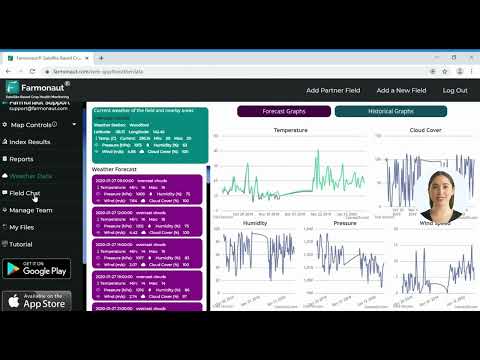Analyzing Financial Services: Lincoln National’s Stock Performance and Analyst Ratings

“Lincoln National’s stock analysis involves examining over 15 financial metrics, including P/E ratios and market capitalization trends.”
In the ever-evolving landscape of financial services, we find ourselves at a crucial juncture where market trends are revealing intriguing developments, particularly in the insurance and investment sectors. Today, we’ll delve deep into a comprehensive stock target price analysis that highlights the shifting sands of investor sentiment and institutional activity. Our focus will be on Lincoln National Corporation (NYSE:LNC), a stalwart in the insurance industry, as we examine its recent performance and the various factors influencing its market position.
Recent Developments in Lincoln National’s Stock Performance
Lincoln National has recently been the subject of intense scrutiny from Wall Street analysts, with several notable adjustments to its stock target price. Let’s break down these changes and what they mean for investors:
- Barclays Adjustment: Barclays has raised Lincoln National’s target price from $36.00 to $38.00, suggesting a potential upside of 2.67% from its current trading price. Despite this upward revision, Barclays maintains an “equal weight” rating on the stock.
- TD Cowen’s Perspective: TD Cowen has also shown optimism by raising its price target from $34.00 to $37.00, while retaining a “hold” rating.
- Wells Fargo’s Cautious Stance: In contrast, Wells Fargo adjusted its target downwards from $29.00 to $28.00, also rating the stock as “equal weight.”
These varied adjustments reflect the complex nature of the financial services market trends and the differing opinions among analysts regarding Lincoln National’s future prospects.
Analyst Consensus Ratings and Market Sentiment
The overall analyst consensus for Lincoln National paints a picture of cautious optimism:
- One analyst has recommended a sell
- Nine have suggested holding the stock
- Only one has issued a buy recommendation
This distribution of opinions has led to a consensus “Hold” rating among analysts, with an average target price of $33.60. Such a consensus reflects the current uncertainty in the market and the challenges faced by the insurance sector as a whole.
Trivia: “Analyst consensus ratings for financial services stocks typically consider data from more than 20 Wall Street firms.”
Stock Trading Performance and Key Metrics
Recent trading sessions have seen Lincoln National’s stock show signs of strength:
- Shares were up $1.24 to reach $37.01
- Trading volume of 2,451,511 shares, significantly above its average
- Market capitalization stands at $6.3 billion
- Price-to-earnings ratio of 26.44
- PEG ratio of 0.27
- Beta value of 1.79, indicating higher volatility compared to the market
Over the past year, Lincoln National’s stock has demonstrated considerable volatility, ranging from a low of $25.09 to a high of $37.24. This price range underscores the challenges and opportunities present in the current market landscape.
Financial Health and Liquidity Ratios
When examining Lincoln National’s financial health, we observe some concerning liquidity ratios:
- Quick ratio of 0.27
- Current ratio of 0.27
- Debt-to-equity ratio of 0.73
These figures may indicate potential liquidity challenges and a significant level of financial leverage. However, it’s crucial to consider these ratios in the context of the insurance industry, where such metrics often differ from other sectors due to the nature of insurance business models.
Recent Quarterly Earnings and Future Projections
Lincoln National’s latest quarterly results have shown some positive signs:
- Reported earnings of $1.91 per share, surpassing consensus estimates of $1.87
- Return on equity of 18.15%, indicating efficient use of shareholder equity
- Net margin of 2.51%, which, while positive, suggests room for improvement in profitability
Looking ahead, analysts foresee an earnings per share (EPS) of 6.97 for the current year, reflecting cautious optimism about Lincoln National’s future performance.
Institutional Investor Activity and Hedge Fund Interest
The movement of institutional investors and hedge funds can provide valuable insights into market sentiment. Recent activity in Lincoln National’s stock has been noteworthy:
- The Manufacturers Life Insurance Company increased its stake by 2.9% in the second quarter
- Cetera Investment Advisers raised its stake by 5.3%
- Brookstone Capital Management, CWM LLC, and Hexagon Capital Partners also reported stake increases
These movements suggest continued interest from institutional investors, with approximately 72.81% of Lincoln National’s stock owned by institutional investors and hedge funds. Such significant institutional ownership can provide stability but also introduces the potential for large-scale movements if these investors decide to adjust their positions.
Lincoln National’s Business Segments and Market Position
To fully understand Lincoln National’s stock performance, it’s essential to examine its business structure:
- Life Insurance Segment: Offers a range of life insurance products
- Annuities Segment: Provides various annuity products for retirement planning
- Group Protection: Focuses on group insurance products for employers
- Retirement Plan Services: Offers retirement solutions for businesses and individuals
This diversified approach allows Lincoln National to maintain a competitive position in the insurance and retirement services market, potentially providing some resilience against sector-specific challenges.

Comparative Analysis: Lincoln National vs. Industry Averages
| Metric | Lincoln National | Industry Average | Difference |
|---|---|---|---|
| Current Stock Price | $37.01 | $42.50 | -$5.49 |
| Price-to-Earnings Ratio | 26.44 | 22.30 | +4.14 |
| Market Capitalization | $6.3B | $8.2B | -$1.9B |
| Beta Value | 1.79 | 1.20 | +0.59 |
| Trading Volume (30-day avg) | 2,451,511 | 1,800,000 | +651,511 |
| Analyst Consensus Rating | Hold | Buy | Lower |
This comparative analysis provides a clear picture of Lincoln National’s position relative to industry averages. While the company lags in some areas like current stock price and market capitalization, it shows strength in trading volume and has a higher P/E ratio, suggesting potential investor optimism about future earnings.
Investment Strategies for Retirement in the Current Market
Given the complex nature of Lincoln National’s stock performance and the broader financial services market trends, investors, particularly those planning for retirement, should consider the following strategies:
- Diversification: While Lincoln National offers exposure to the insurance and retirement services sector, a well-rounded portfolio should include a mix of sectors and asset classes.
- Long-term Perspective: The volatility in Lincoln National’s stock price suggests that a long-term investment horizon might be more appropriate for weathering short-term fluctuations.
- Regular Monitoring: Given the frequent analyst rating changes and price target adjustments, investors should stay informed about company performance and market trends.
- Consider Dividend Yield: For retirement planning, stocks with consistent dividend payouts can provide a steady income stream. Evaluate Lincoln National’s dividend history and policies.
- Risk Assessment: The high beta value of Lincoln National’s stock indicates higher volatility. Investors should assess their risk tolerance, especially those nearing retirement.
The Impact of Market Capitalization Trends on Investment Decisions
Market capitalization is a crucial metric in understanding a company’s size and its potential impact on investment portfolios. Lincoln National’s current market cap of $6.3 billion places it in the mid-cap category, which can offer a balance of growth potential and stability.
Key considerations regarding market capitalization trends:
- Growth Potential: Mid-cap stocks like Lincoln National often have more room for growth compared to large-cap stocks, potentially offering higher returns.
- Volatility: They may experience more price volatility than large-cap stocks, as evidenced by Lincoln National’s wide 52-week price range.
- Index Inclusion: Changes in market cap can affect a stock’s inclusion in certain indices, potentially impacting institutional ownership and trading volume.
- Acquisition Target: Mid-cap companies can sometimes become acquisition targets, which could lead to significant price movements.
Investors should monitor Lincoln National’s market cap trends as they can provide insights into the company’s growth trajectory and market perception.
Interpreting Price-to-Earnings Ratios in the Insurance Sector
The price-to-earnings (P/E) ratio is a fundamental metric used to assess a stock’s valuation. Lincoln National’s current P/E ratio of 26.44 warrants careful interpretation within the context of the insurance industry:
- Industry Comparison: Compare Lincoln National’s P/E to both the industry average and its direct competitors to gauge relative valuation.
- Growth Expectations: A higher P/E might indicate that investors expect higher earnings growth in the future.
- Risk Assessment: In the insurance sector, a high P/E could also reflect perceived stability in future earnings, particularly important given the industry’s sensitivity to economic cycles.
- Historical Context: Analyze Lincoln National’s P/E ratio over time to identify trends and potential overvaluation or undervaluation.
Remember that while the P/E ratio is valuable, it should be considered alongside other financial metrics and qualitative factors for a comprehensive analysis.
The Role of Beta in Assessing Stock Volatility
Lincoln National’s beta value of 1.79 indicates that its stock is more volatile than the overall market. This high beta has several implications for investors:
- Risk Profile: A beta greater than 1 suggests that the stock is more sensitive to market movements, potentially offering higher returns but with increased risk.
- Portfolio Impact: Including high-beta stocks like Lincoln National can increase a portfolio’s overall volatility, which may or may not align with an investor’s risk tolerance.
- Sector Consideration: The financial services sector, particularly insurance, often has higher betas due to its sensitivity to economic conditions and interest rates.
- Hedging Strategies: Investors might consider hedging strategies or pairing Lincoln National with lower-beta stocks to balance portfolio risk.
Understanding beta is crucial for risk management and portfolio construction, especially when dealing with stocks in the financial services sector.
Analyzing Trading Volume and Its Implications
The recent trading volume of 2,451,511 shares for Lincoln National, significantly above its average, provides valuable insights:
- Increased Interest: Higher volume often indicates increased investor interest, which can lead to price movements.
- Liquidity: Higher trading volumes generally mean better liquidity, allowing for easier entry and exit positions.
- Price Validation: Significant price movements accompanied by high volume are often considered more valid and sustainable.
- Institutional Activity: Large volume spikes can indicate institutional buying or selling, which can significantly impact stock price.
Investors should monitor trading volume alongside price movements to gain a more comprehensive understanding of market sentiment towards Lincoln National.
The Influence of Hedge Fund Stake Adjustments
Recent hedge fund activity in Lincoln National’s stock provides valuable insights into institutional sentiment:
- Positive Signals: Increased stakes by firms like The Manufacturers Life Insurance Company and Cetera Investment Advisers may indicate positive sentiment.
- Diversification: Hedge funds often adjust stakes as part of broader portfolio strategies, not necessarily reflecting company-specific views.
- Performance Impact: Significant hedge fund involvement can lead to increased volatility, especially if multiple funds make similar moves.
- Long-term vs. Short-term: Assess whether hedge fund adjustments appear to be long-term investments or short-term trading positions.
While hedge fund activity can provide valuable insights, individual investors should conduct their own research and not rely solely on institutional movements.
Interpreting Analyst Consensus Ratings
The current analyst consensus for Lincoln National leans towards a “Hold” rating, with an average target price of $33.60. This consensus rating provides several key insights:
- Market Sentiment: A “Hold” rating often indicates that analysts believe the stock is fairly valued at current levels.
- Growth Expectations: The disparity between current price and target price suggests limited upside potential in the near term.
- Risk Assessment: Mixed ratings (1 sell, 9 hold, 1 buy) indicate a level of uncertainty about the company’s future performance.
- Industry Context: Compare Lincoln National’s consensus rating with those of its peers to gauge relative attractiveness within the sector.
Investors should use analyst ratings as one of many tools in their decision-making process, always considering the broader context and their own investment goals.
The Impact of Quarterly Earnings Reports on Stock Performance
Lincoln National’s recent quarterly earnings report, showing EPS of $1.91 against estimates of $1.87, demonstrates the company’s ability to exceed market expectations. This performance can have several implications:
- Short-term Price Movements: Positive earnings surprises often lead to short-term stock price increases.
- Analyst Revisions: Strong earnings can prompt analysts to revise their future estimates and price targets upward.
- Investor Confidence: Consistently beating estimates can build long-term investor confidence in management’s ability to deliver results.
- Sector Comparisons: Compare Lincoln National’s earnings performance with its peers to gauge relative strength within the insurance industry.
While quarterly earnings are important, investors should also consider longer-term trends and the broader economic context when making investment decisions.
Conclusion: Navigating the Complex Landscape of Financial Services Stocks
As we’ve seen throughout this analysis, investing in financial services stocks like Lincoln National requires a nuanced understanding of various factors, from market capitalization trends to analyst ratings and hedge fund activities. The current “Hold” consensus and mixed analyst opinions reflect the uncertainties facing the insurance sector and the broader economy.
For investors considering Lincoln National or similar stocks in their portfolios, especially as part of retirement planning strategies, it’s crucial to:
- Maintain a long-term perspective while staying informed about short-term developments
- Diversify investments to mitigate risks associated with sector-specific challenges
- Regularly reassess investment theses in light of new financial data and market trends
- Consider seeking professional advice to navigate the complexities of financial services investments
As the market continues to evolve, staying informed and adaptable will be key to successful investment strategies in the financial services sector.
FAQ Section
- What does a “Hold” rating mean for Lincoln National’s stock?
A “Hold” rating typically suggests that analysts believe the stock is fairly valued at its current price and that investors should maintain their current positions without buying more or selling existing shares. - How does Lincoln National’s P/E ratio compare to the industry average?
Lincoln National’s P/E ratio of 26.44 is higher than the industry average, which may indicate that investors have higher growth expectations for the company compared to its peers. - What impact does the high beta value have on Lincoln National’s stock?
The high beta of 1.79 suggests that Lincoln National’s stock is more volatile than the overall market, potentially offering higher returns but with increased risk. - How significant is the institutional ownership of Lincoln National’s stock?
With institutional investors and hedge funds owning about 72.81% of the stock, their trading decisions can have a significant impact on the stock’s price and volatility. - What factors should investors consider when evaluating Lincoln National for retirement portfolios?
Investors should consider factors such as the company’s dividend policy, long-term growth prospects, financial stability, and how it fits into a diversified portfolio strategy aligned with their retirement goals and risk tolerance.






